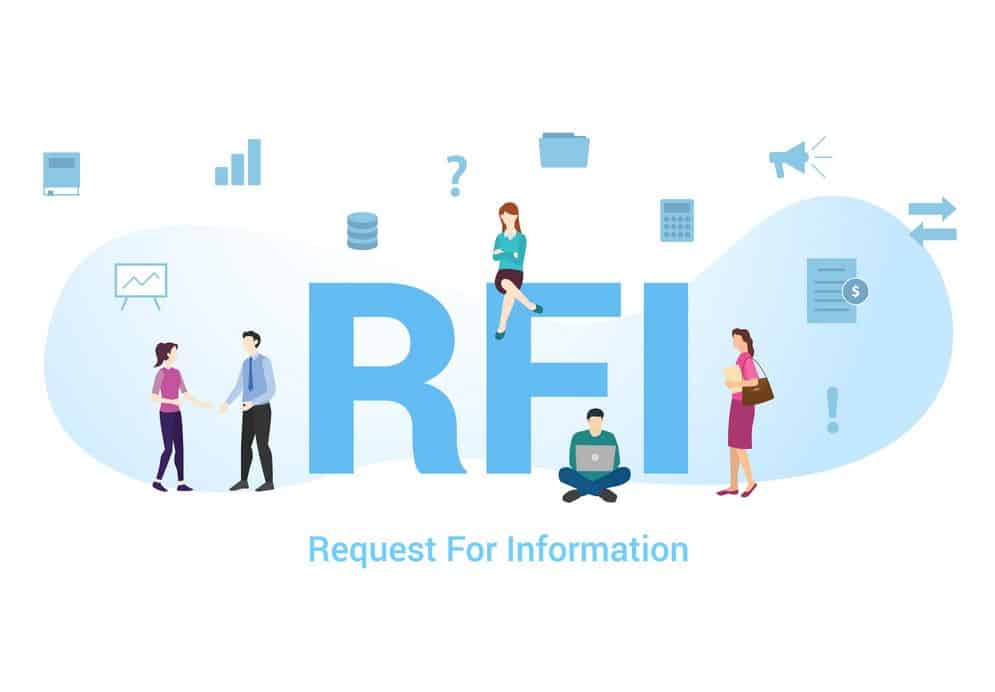A Proven RFI Process For Any Company

The ultimate step-by-step guide to a successful request for Information
What is a Request For Information (RFI)?
A Request For Information or RFI, is usually the formal process (usually in the form of a document or questionnaire) of collecting information from a number of suppliers prior to carrying out a more formal tender process (RFP or RFQ). Typically it will consist of a list of questions that you would like your suppliers to answer in order to get a better understanding of their capabilities. The RFI process acts as a critical process that can help companies to understand a supplier’s capabilities better however is also a good opportunity to narrow down a list of potential vendor candidates for a later RFP or RFQ stage.
The RFI process can often be made complex and time-consuming however it is much simpler than you might think We have detailed below how you can take the right approach when creating an RFI from scratch with a detailed step-by-step proven process for success and speed.
When properly crafted, RFI’s allow companies to gather easily-digestible information about potential suppliers. They also foster competition among vendors, clarify potential new solutions, and enable companies to take significant steps toward achieving the most cost-effective, highest quality solution available.
What’s the purpose of the RFI Process? When should you use an RFI?
Before making a start you need to understand if an RFI process is the right one for you. We have detailed two main justifications for creating and sending an RFI to your supplier(s).
- To discover a supplier’s capabilities before progressing with an RFP (Request for proposal). An RFI can be a great process for the supplier selection process of an RFP. It enables companies with a specific requirement to ask their suppliers a set of questions to understand if they are the right fit for them as a supplier and if they can deliver the goods or services they need.
- Supplier vetting and due diligence. The process of an RPI offers an opportunity to get to know your potential new supplier. An RFI is not the stage where you would ask about pricing however where you would validate suppliers based on their responses to your questions within the RFI
Once you have decided to run an RFI you will need to work out the best way to run it in an organised and fair manner. There are two main options for you to choose from:
- Digital format – eProcurement software’s should offer an ‘eSourcing platform‘ which will allow you to run an RFI process end-to-end including the supplier evaluation stage. The huge upside to running a digital RFI is that it makes it standardised for your suppliers and yourself when evaluating them after they’ve responded. It also means that you do not need to worry about losing emails or documents from the suppliers involved as they are all stored in the system. Be careful though, some of these can be extremely expensive as they are aimed at enterprise size organisations however with newer cloud eProcurement software coming to the market, you should be able to find a cost-effective one for your needs. Check out our blog on how to select the right eProcurement software for your company. You can even try oboloo free for 30 days.
- Traditional format – As mentioned above, this is often done by creating an Excel spreadsheet of all the goods and services you would like your suppliers to price against and is send via email. The cons to this format are that you run the possibility of losing supplier’s responses or your original email ending up in their junk folder. Another is that suppliers try to go above and beyond to stand out when responding to an RFI and will alter the spreadsheet to fit more information in. This does not work well when you’re trying to compare them against each other at the evaluation stage. And finally, you will have to merge all of their responses (which are often in different formats) into one spreadsheet for comparison so if this is your preferred method please allow time for this as you will most likely find that you will need to ask a supplier or two to resubmit their response to fit in with your master spreadsheet or you will even end up having to do this yourself which is a very big task.
Depending on what you are trying to procure from a supplier is key when evaluating the above two processes for an RFI. If you are procuring a single ‘good’ and asking two suppliers about their capabilities then a traditional way might not be so bad, however, if you are inviting multiple suppliers then you need to think about the time it takes to write and distribute a good RFI and collate the responses. Digital platforms will do this work for you, and instantly.
What are the standard steps in the RFI Process & the RFI preparation process?
You may not need to use every step of the below RFI process however they should still be considered.
- Establish the companies needs. This is one of the most important and obvious parts of any RFI. Before you start creating your RFI process you need to think about what the entire company actually needs from it. Communication to all involved or affected locations, departments, or stakeholders is vital in order to gather all of their requirements and to measure any potential impact of changing suppliers. E.g. is there already a contract in place? Is another area of the business still using this supplier for critical work? Should another department have some input? Will there be disruption to the business for any amount of time? This is a key area of the strategic procurement process.
- Finalise the questions that you want to ask the suppliers. A well-written RFI will offer clear details on how answers should be formatted. Ideally this will be sent digitally, meaning that suppliers will have to adhere to a specific format, keeping the process fair and simple.
- Choose suppliers to invite. This point for some can be a quick and easy one (simply finding ten suppliers that they think can deliver what is needed and sending the RFI to a generic company email address). However, think about this carefully as it could save time and money in the long run. It is worthwhile getting to know your suppliers beforehand, having a meeting with them to discover their capabilities, ensuring that they will meet any future vetting process, and to spot any potential red flags. The supplier management process starts here and should not be underestimated.
- Create the RFI (See below section for more details)
- Send the RFI. Depending on what route you decided to take (digital or traditional) you can now send your RFI to your suppliers.
- Answer supplier questions. RFI’s are never 100% straightforward and every company interprets them differently from the next. It is important to allow suppliers an opportunity to send you a list of questions that they might have and for you to respond in as greater detail as possible. Remember to give them a deadline to send these questions to yourselves and to give them enough time to respond to the RFI once they have received your answers.
- Review responses. If you choose to carry out your RFI on a digital platform then this is the easy part. The procurement system will do this for you automatically and compare your supplier’s costings and questionnaire responses side by side. If you choose the traditional method then you will most likely need to consolidate each supplier’s response into a centralised spreadsheet. Once the analysis is complete, it is important to include all of the internal stakeholders involved (point 1) to present the results to. This is also an opportunity to get other areas of the business involved such as Commercial, to review a supplier’s Scope of Works or Finance to look over the supplier’s costings.
- Score the responses and select a supplier. style=”color: #666699;”> By this stage, you might decide it is worthwhile removing some of the suppliers that you believe would not be a good fit for whatever reason. Information on supplier short-listing can be found here. Narrowing down the number of suppliers to perhaps the top 3 will help at this stage. You should not notify any suppliers that you believe have been unsuccessful yet.
- Create an RFP
What information should you include in your RFI?
RFI templates off of the internet are available and can be a good starting point however will very rarely meet your company’s needs. Ensure that information is correct such as dates and contact info. Cloud-based procurement software will build the RFI for you automatically. Although each RIP is unique, most will contain the majority of the following sections:
- Your company background & general information
- Project description – what you are trying to achieve from this RFI process
- Project requirements and project objectives: This is often the lengthiest section of the RFI. Be specific.
- Milestones and deadlines – including a deadline for suppliers to submit any questions.
- Questionnaire – Remember, an RFI is mainly used to ask your supplier questions to establish their capabilities to carry out your project. E.g. if you care about sustainability as a company you can ask them if they have a sustainability policy and if so can they attach this to their response.
- Contact information and the deadline for submissions (again).
Additional resources
These external articles contain useful points to consider when creating an RFI:

